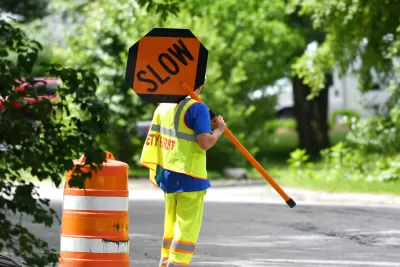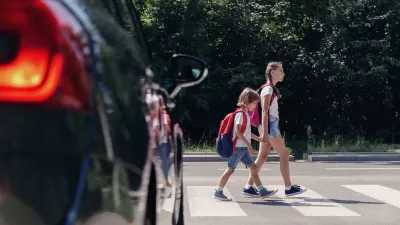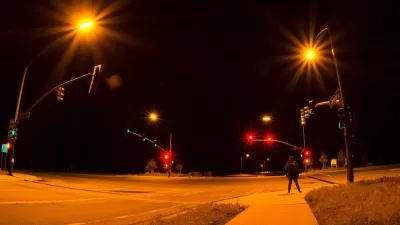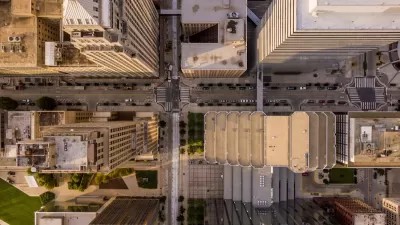The federal manual governing road design is getting an update. Will it encourage real progress toward road safety?

A post on the National Association of City Transportation Officials (NACTO) website outlines the key reforms the organization is looking for in the newly revised Manual on Uniform Traffic Control Devices (MUTCD), the federal document that dictates how roads are built in the United States.
For many safe streets advocates, the MUTCD is uniquely responsible for the unsafe design of many American roads, where over 40,000 people lose their lives each year. As NACTO points out, “The MUTCD governs all road markings, stop signs, and traffic lights in the U.S., and prioritizes moving vehicles quickly at the expense of safety, sustainability, and accessibility for people walking, biking, using a wheelchair, or riding transit.”
Some of the changes NACTO hopes for in the new MUTCD, which will be released after a review by the Office of Management and Budget (OMB), include:
- Elevating safety and implementing a ‘safe systems’ approach
- Eliminating the 85th percentile rule and other free-flow speeds in setting speed limits.
- Reforming regulations for signals to make street crossings safer for pedestrians.
- Removing the manual’s new proposed chapter on autonomous vehicles, which, according to NACTO, “absolves AV companies of the responsibility to build vehicles that keep road users safe within the existing transportation network.”
- Removing unnecessary restrictions on the use of paint for bus lanes, bike lanes, and crosswalks; and eliminating design restrictions for urban bikeways that conflict with data on bike safety.
FULL STORY: It’s Time to Reshape the Federal Document That Shapes Our Streets: The MUTCD

Trump Administration Could Effectively End Housing Voucher Program
Federal officials are eyeing major cuts to the Section 8 program that helps millions of low-income households pay rent.

Planetizen Federal Action Tracker
A weekly monitor of how Trump’s orders and actions are impacting planners and planning in America.

Ken Jennings Launches Transit Web Series
The Jeopardy champ wants you to ride public transit.

Crime Continues to Drop on Philly, San Francisco Transit Systems
SEPTA and BART both saw significant declines in violent crime in the first quarter of 2025.

How South LA Green Spaces Power Community Health and Hope
Green spaces like South L.A. Wetlands Park are helping South Los Angeles residents promote healthy lifestyles, build community, and advocate for improvements that reflect local needs in historically underserved neighborhoods.

Sacramento Plans ‘Quick-Build’ Road Safety Projects
The city wants to accelerate small-scale safety improvements that use low-cost equipment to make an impact at dangerous intersections.
Urban Design for Planners 1: Software Tools
This six-course series explores essential urban design concepts using open source software and equips planners with the tools they need to participate fully in the urban design process.
Planning for Universal Design
Learn the tools for implementing Universal Design in planning regulations.
Heyer Gruel & Associates PA
Ada County Highway District
Institute for Housing and Urban Development Studies (IHS)
City of Grandview
Harvard GSD Executive Education
Toledo-Lucas County Plan Commissions
Salt Lake City
NYU Wagner Graduate School of Public Service





























